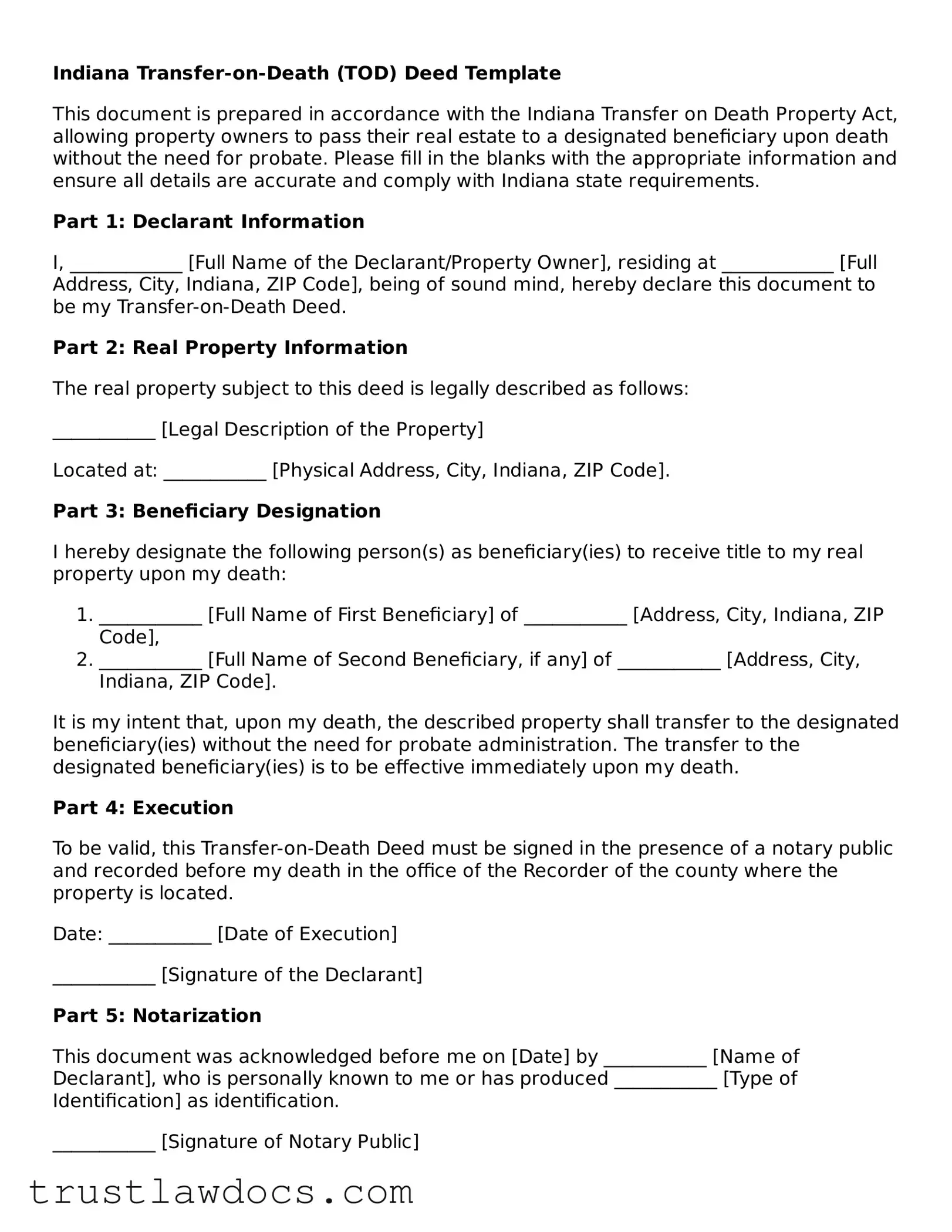Indiana Transfer-on-Death (TOD) Deed Template
This document is prepared in accordance with the Indiana Transfer on Death Property Act, allowing property owners to pass their real estate to a designated beneficiary upon death without the need for probate. Please fill in the blanks with the appropriate information and ensure all details are accurate and comply with Indiana state requirements.
Part 1: Declarant Information
I, ____________ [Full Name of the Declarant/Property Owner], residing at ____________ [Full Address, City, Indiana, ZIP Code], being of sound mind, hereby declare this document to be my Transfer-on-Death Deed.
Part 2: Real Property Information
The real property subject to this deed is legally described as follows:
___________ [Legal Description of the Property]
Located at: ___________ [Physical Address, City, Indiana, ZIP Code].
Part 3: Beneficiary Designation
I hereby designate the following person(s) as beneficiary(ies) to receive title to my real property upon my death:
- ___________ [Full Name of First Beneficiary] of ___________ [Address, City, Indiana, ZIP Code],
- ___________ [Full Name of Second Beneficiary, if any] of ___________ [Address, City, Indiana, ZIP Code].
It is my intent that, upon my death, the described property shall transfer to the designated beneficiary(ies) without the need for probate administration. The transfer to the designated beneficiary(ies) is to be effective immediately upon my death.
Part 4: Execution
To be valid, this Transfer-on-Death Deed must be signed in the presence of a notary public and recorded before my death in the office of the Recorder of the county where the property is located.
Date: ___________ [Date of Execution]
___________ [Signature of the Declarant]
Part 5: Notarization
This document was acknowledged before me on [Date] by ___________ [Name of Declarant], who is personally known to me or has produced ___________ [Type of Identification] as identification.
___________ [Signature of Notary Public]
___________ [Printed Name of Notary Public]
Notary Public for the State of Indiana.
My commission expires: ___________
